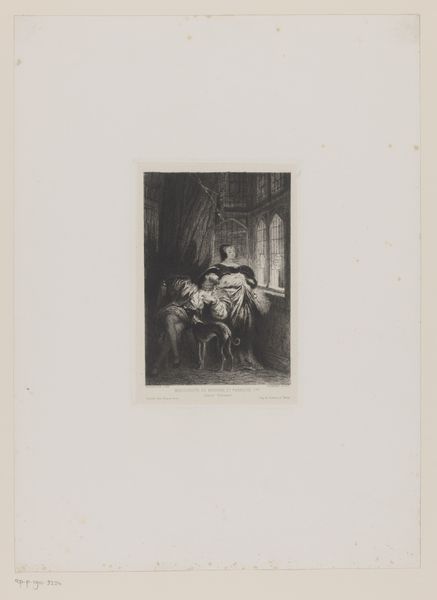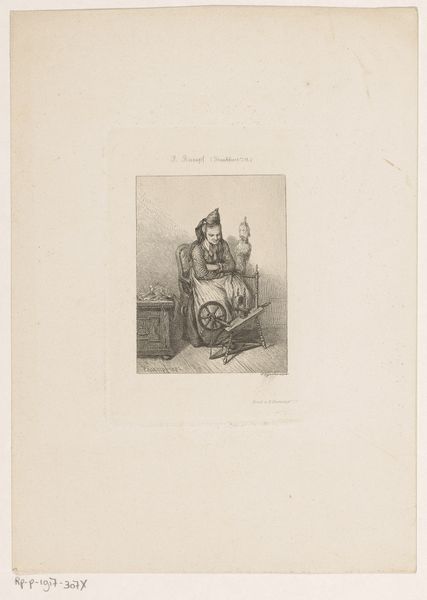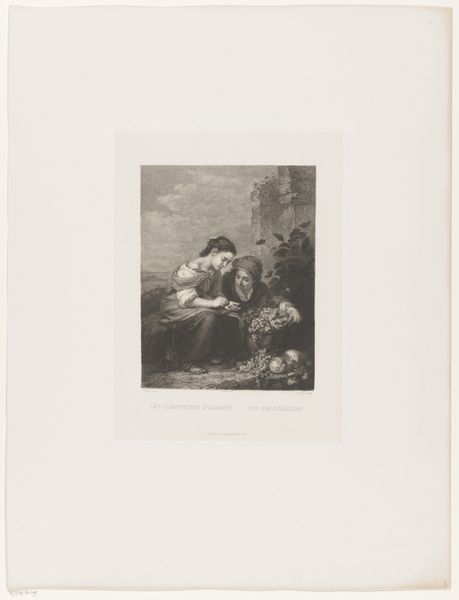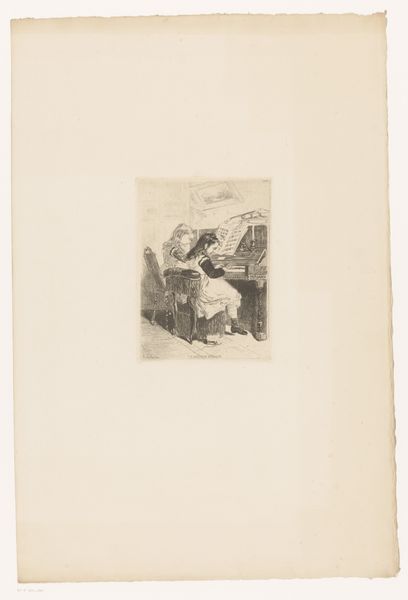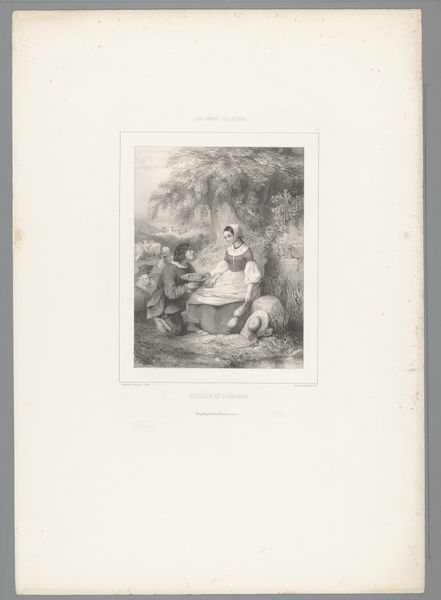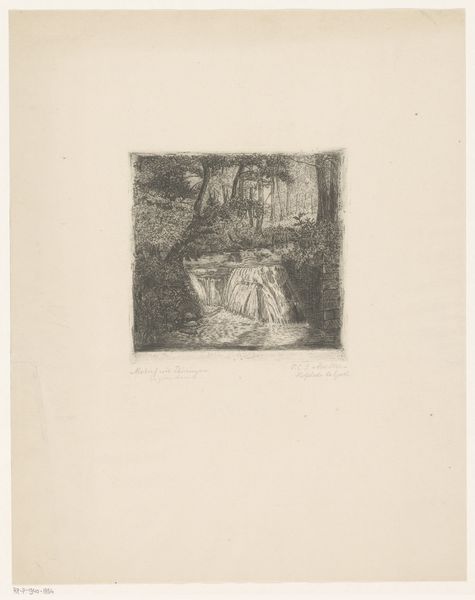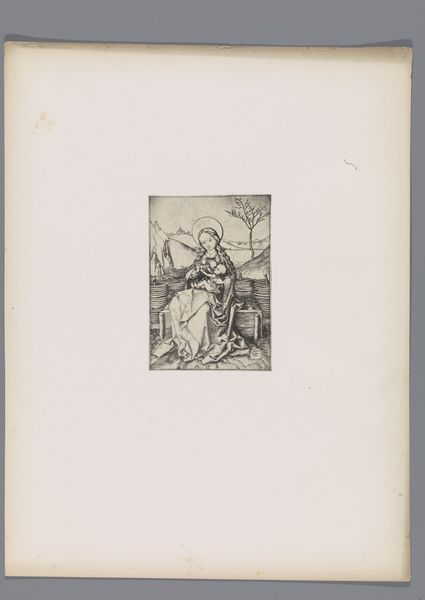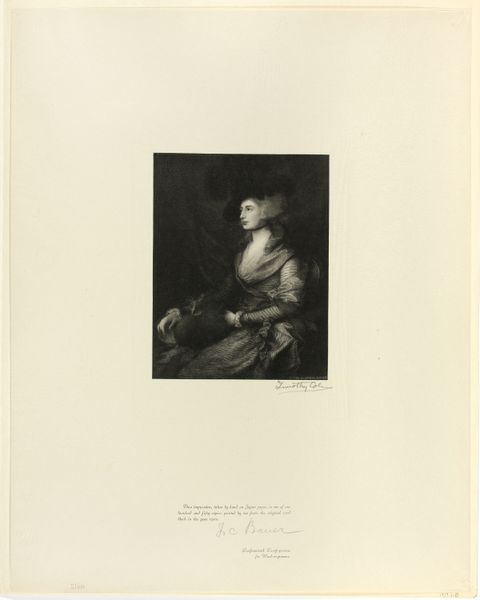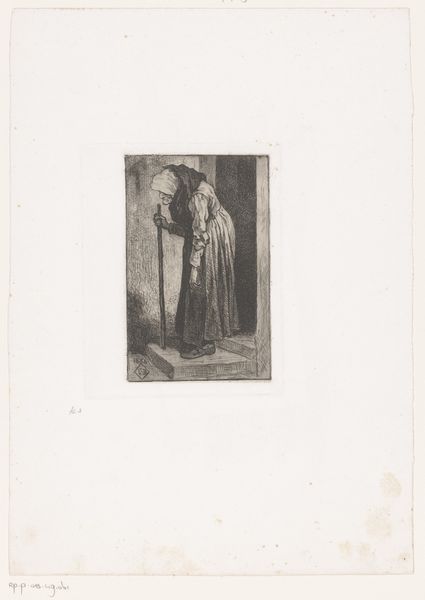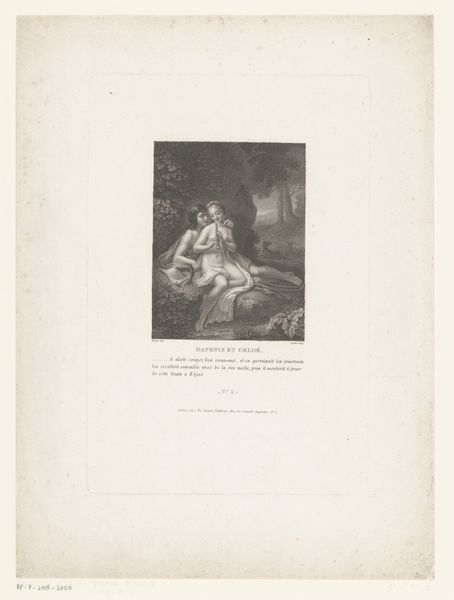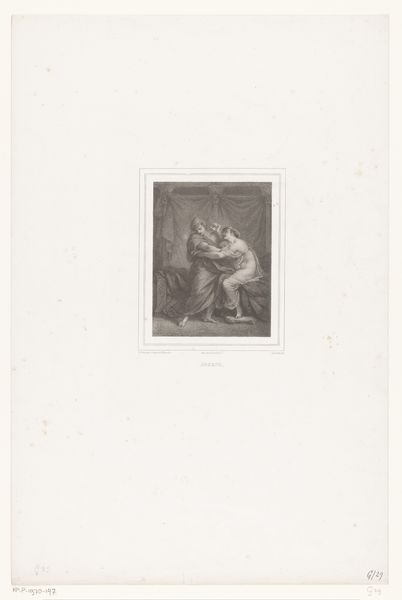
Dimensions: height 242 mm, width 171 mm
Copyright: Rijks Museum: Open Domain
Curator: This is "Rustende herder" or "Resting Shepherd," an etching by Léopold Flameng, created in 1853. What's your initial impression? Editor: It’s quiet, contemplative. The shepherd's pose and the subdued light create a feeling of solitude, a retreat from work. There's almost a sense of weariness about him. Curator: Weariness probably comes with the realities of 19th-century pastoral work. What I see is a clear fascination with printmaking as labor itself, with all the chemical and mechanical means deployed to capture such a detailed landscape, with the figure's pose carefully reproduced. Editor: It's interesting you mention the pose. The figure’s slumped posture and shadowed face suggests humility but perhaps also resignation. I see archetypal echoes here of figures from Christian art such as the Good Shepherd, which inverts those very characteristics! Curator: Fascinating link! Although, the materials, and their manipulation, must be acknowledged: etched lines giving texture to the rock on which the shepherd sits, and providing that depth. It's important to understand how labor and the processes are inscribed onto materials and then inform its meanings. Editor: Right, but the symbols are vital as well! His staff leaning against the wall suggests more than just resting; it points to security and direction. But within the context of Romanticism that can be quickly inverted: he has direction, yes, but can or will he go back to work? Curator: The production context plays heavily into the interpretation of its symbols, since its reproduction means a democratization of labor and pastoral scenery, giving to consumers a sense of place and perhaps challenging high art traditions by reaching new audiences. Editor: Yes! And perhaps even shaping their imagination of their land and folklore. Curator: Indeed! What seems unique about this piece of artwork, I’d suggest, is in how traditional lines between artistic creation, popular consumption, and depictions of class begin to blur. Editor: Well, seeing it through the lens of symbols or materials enriches our reading!
Comments
No comments
Be the first to comment and join the conversation on the ultimate creative platform.

